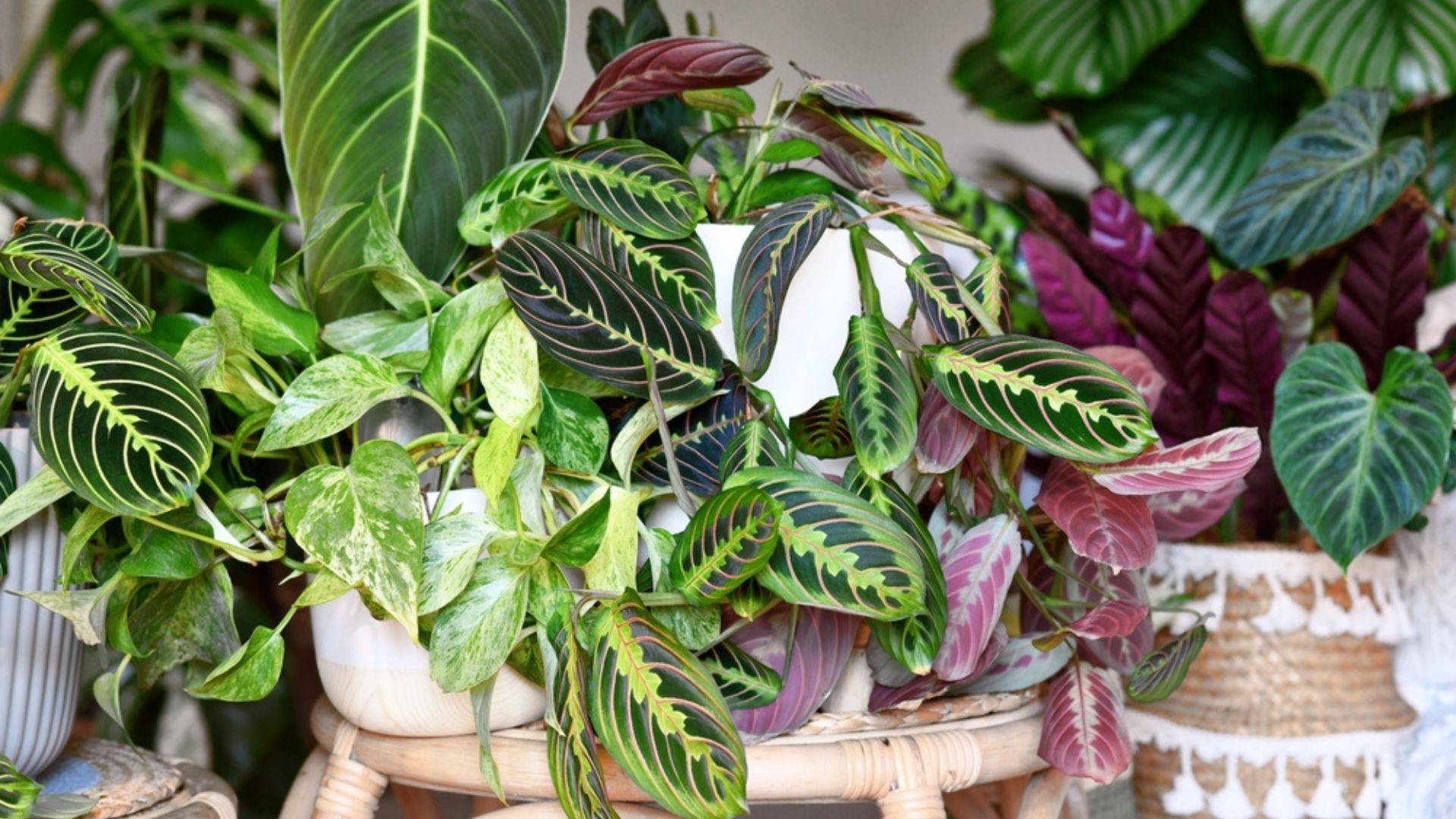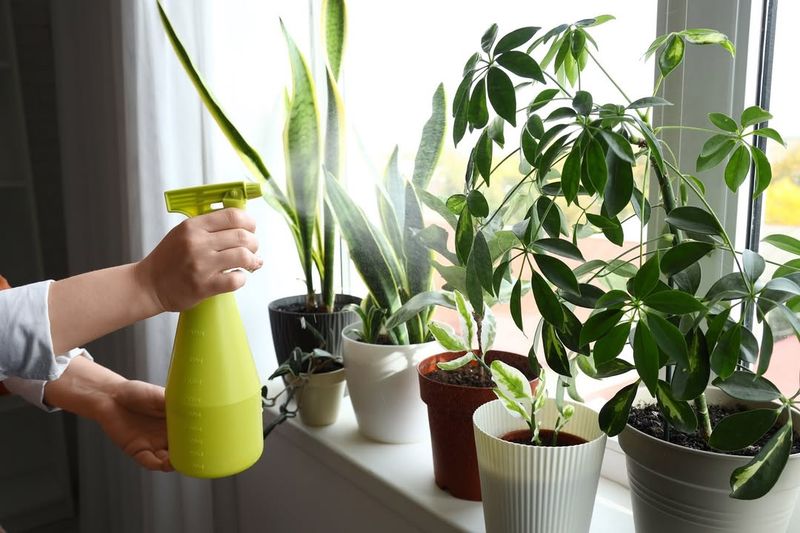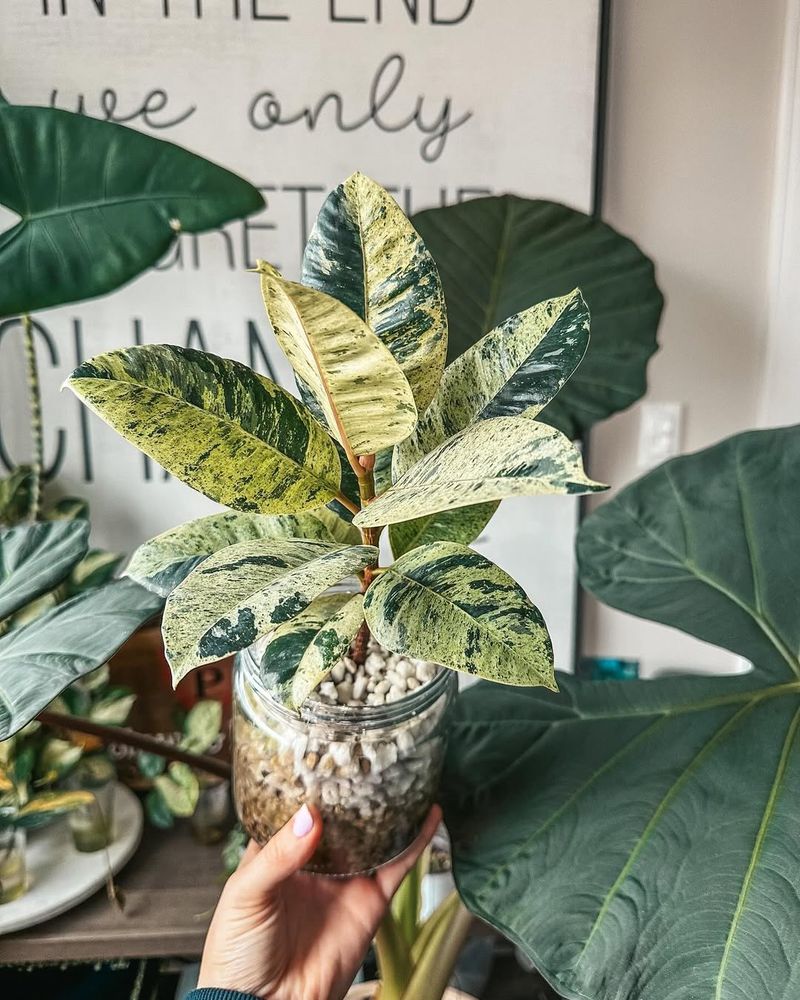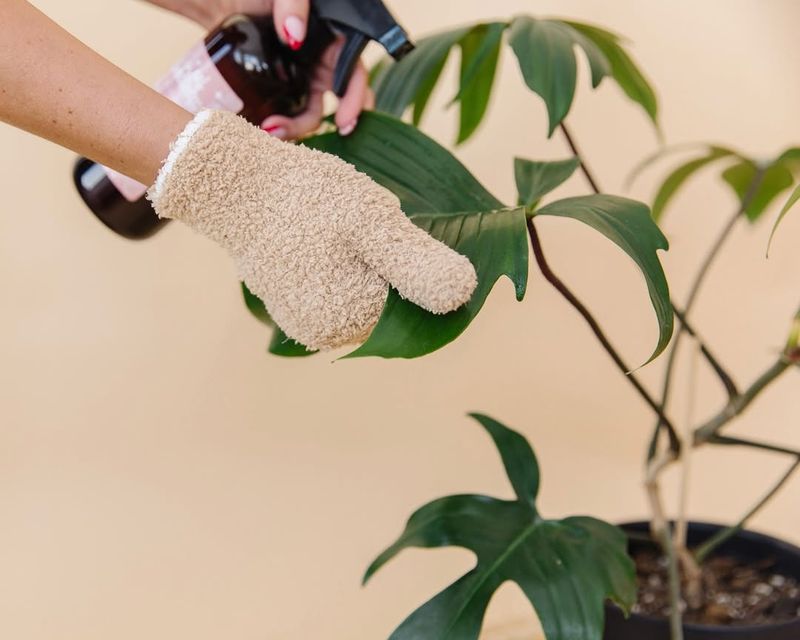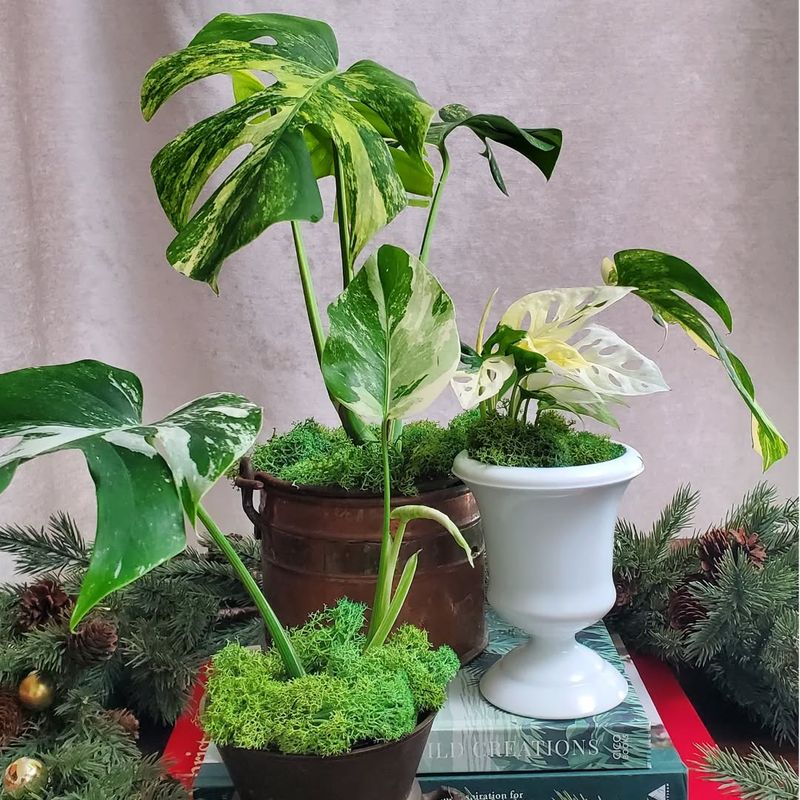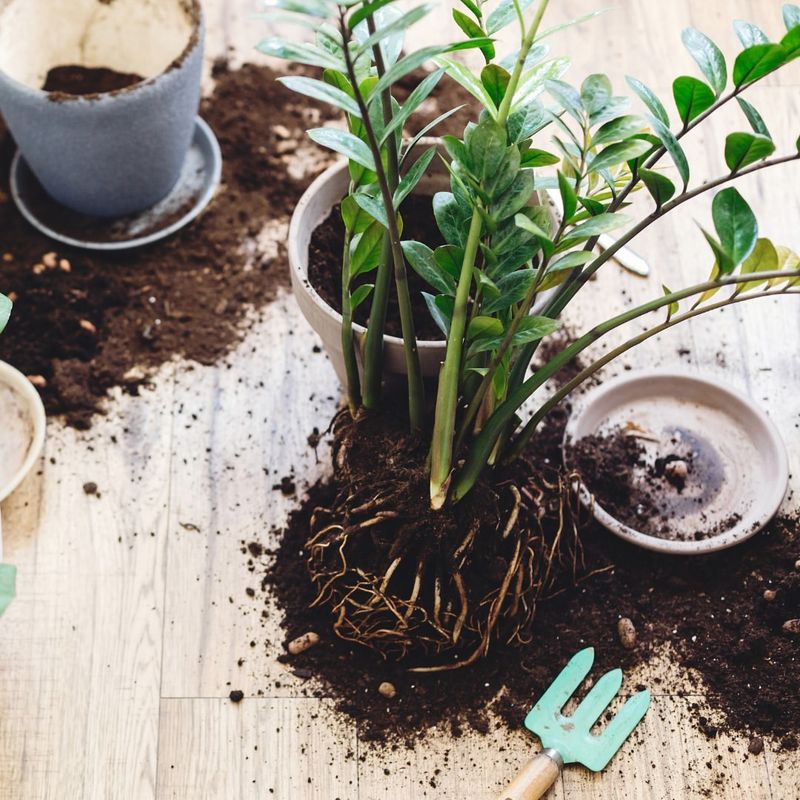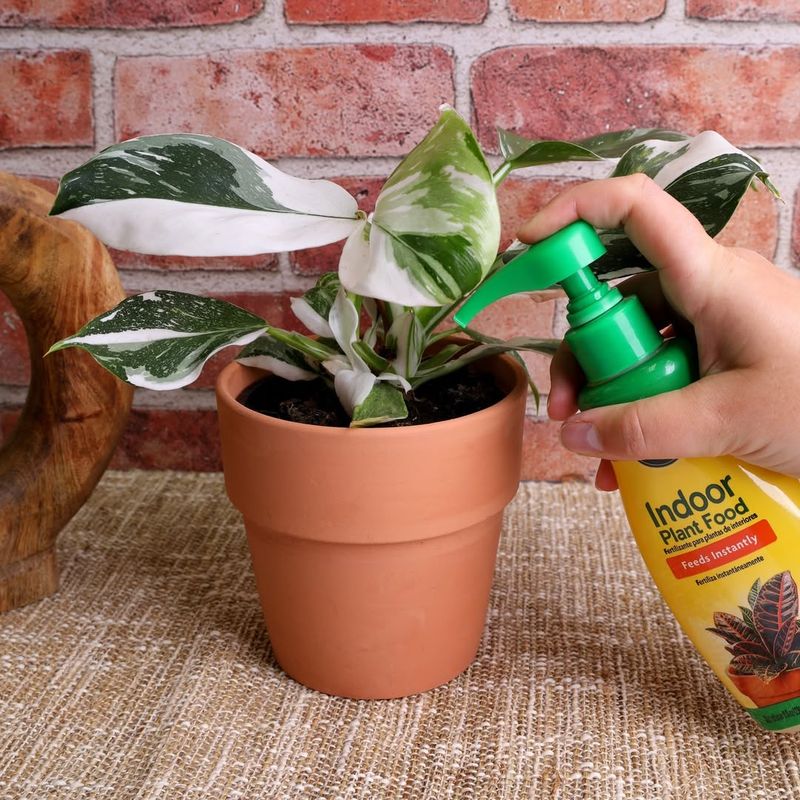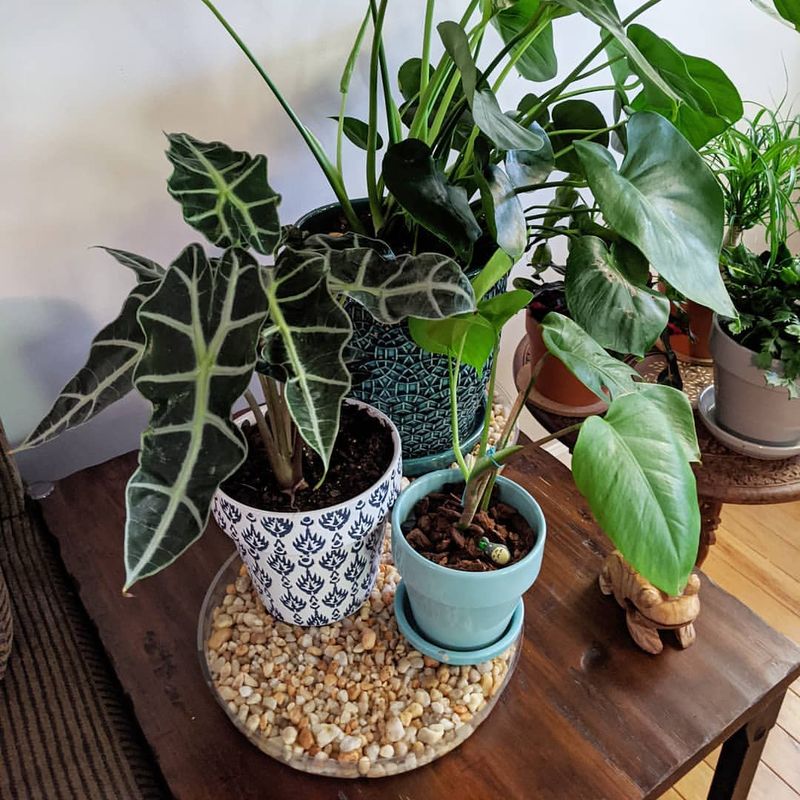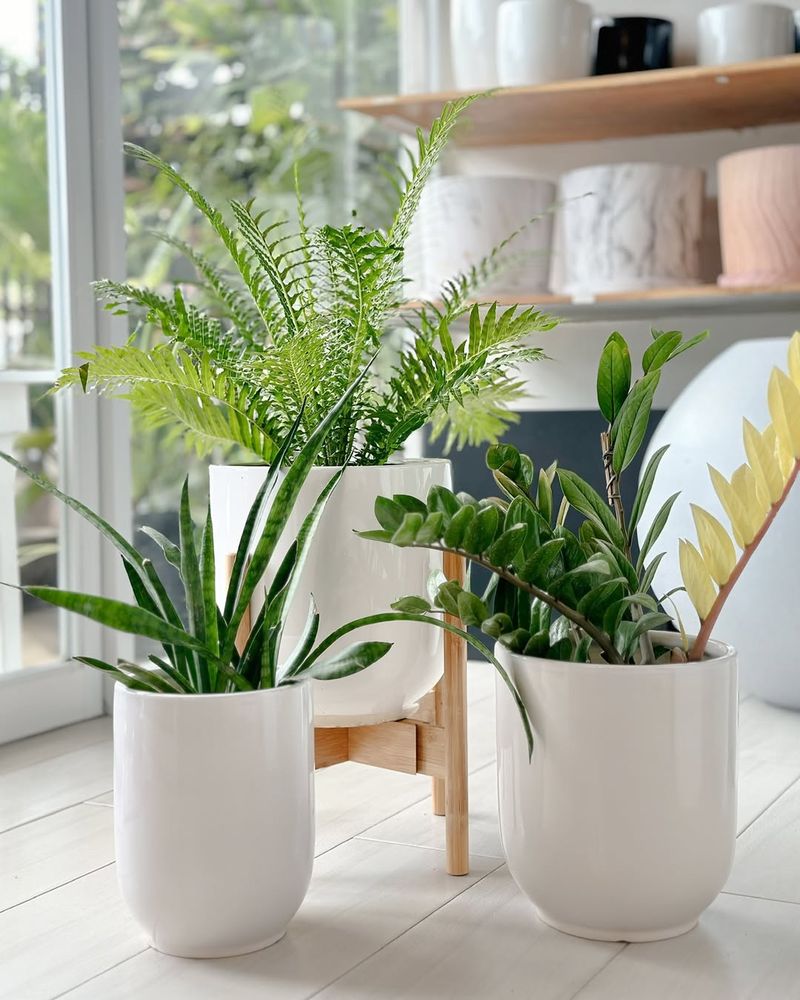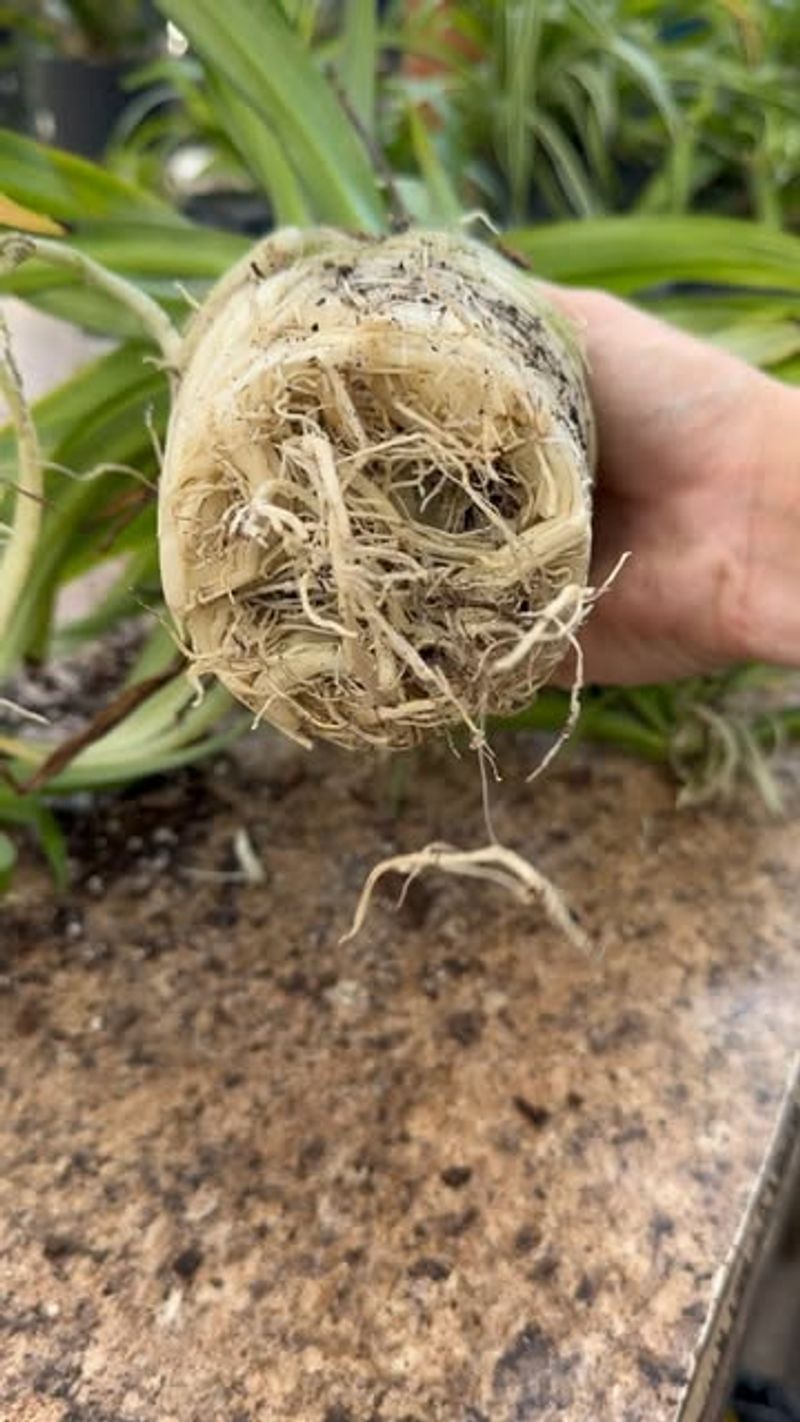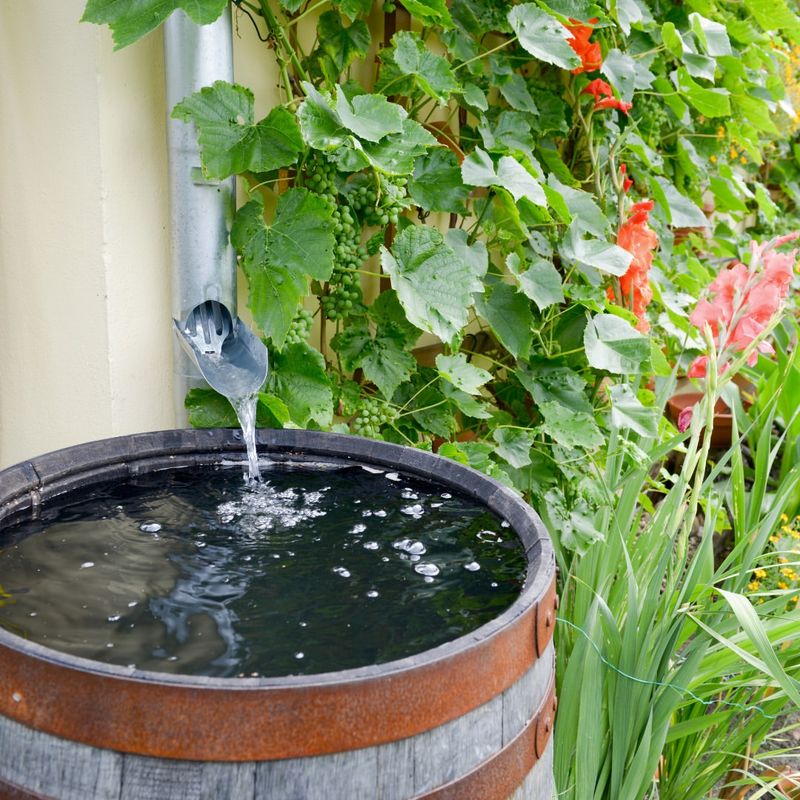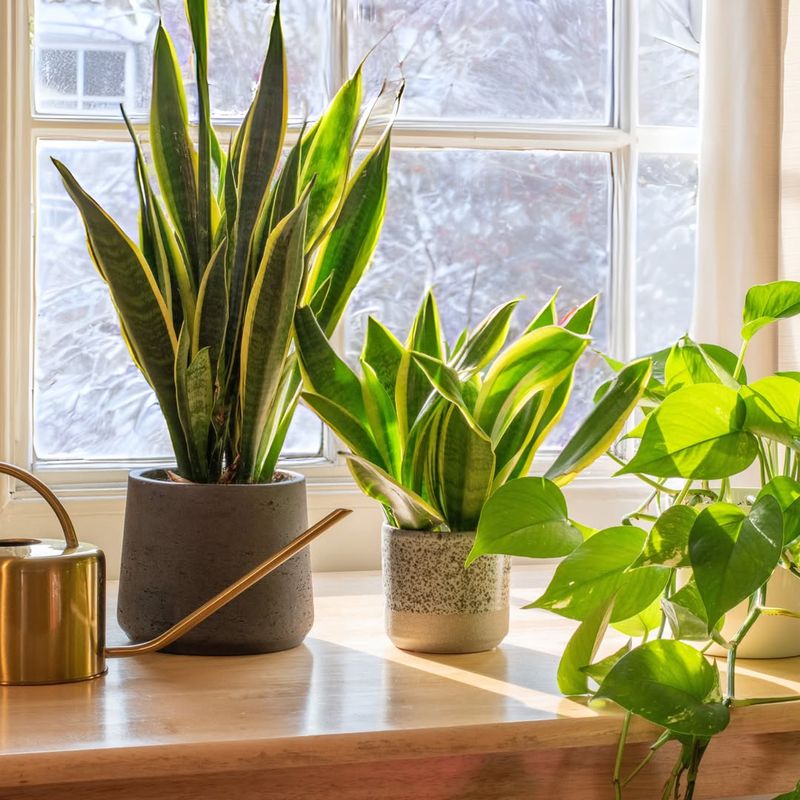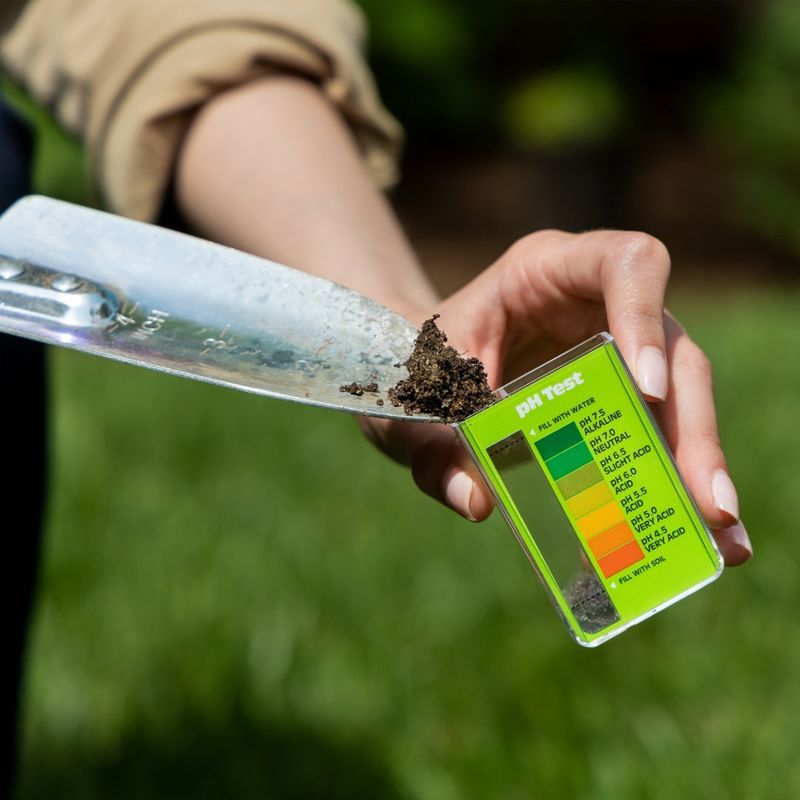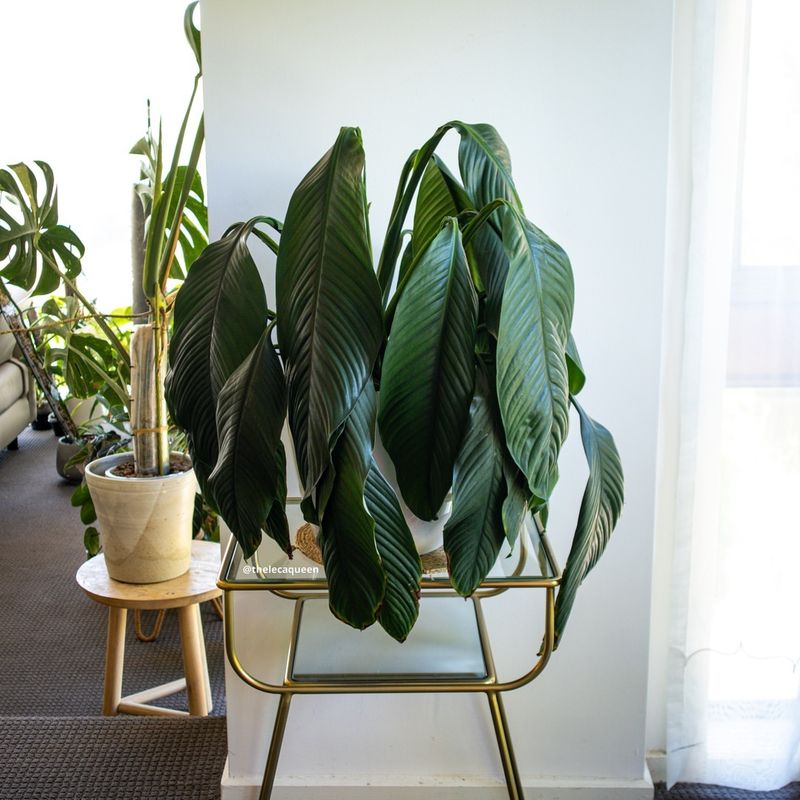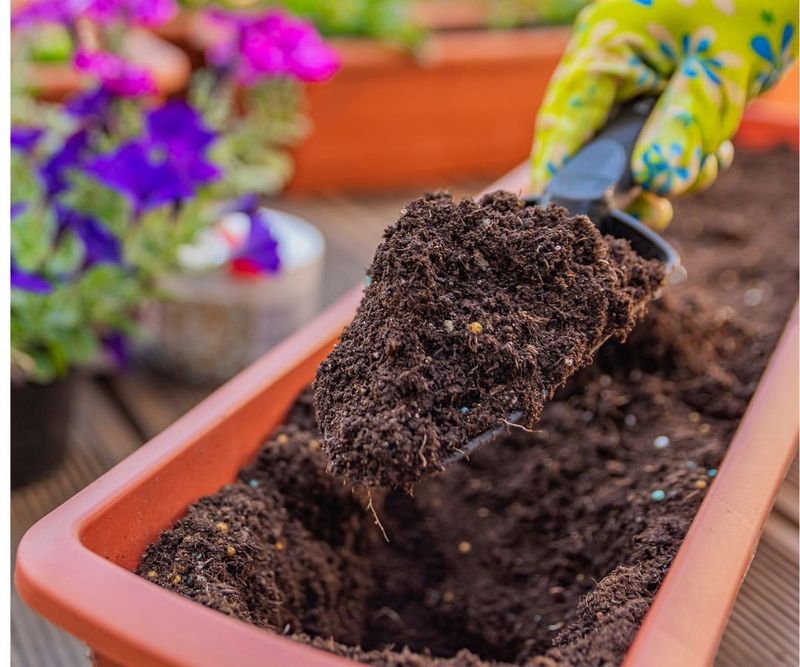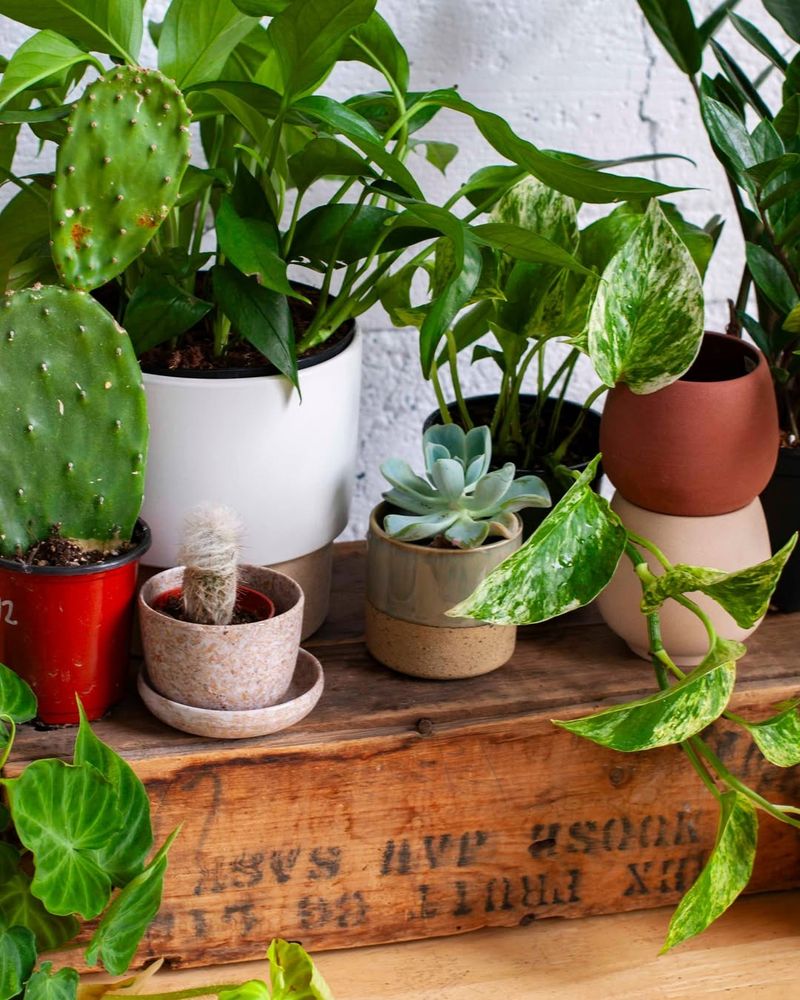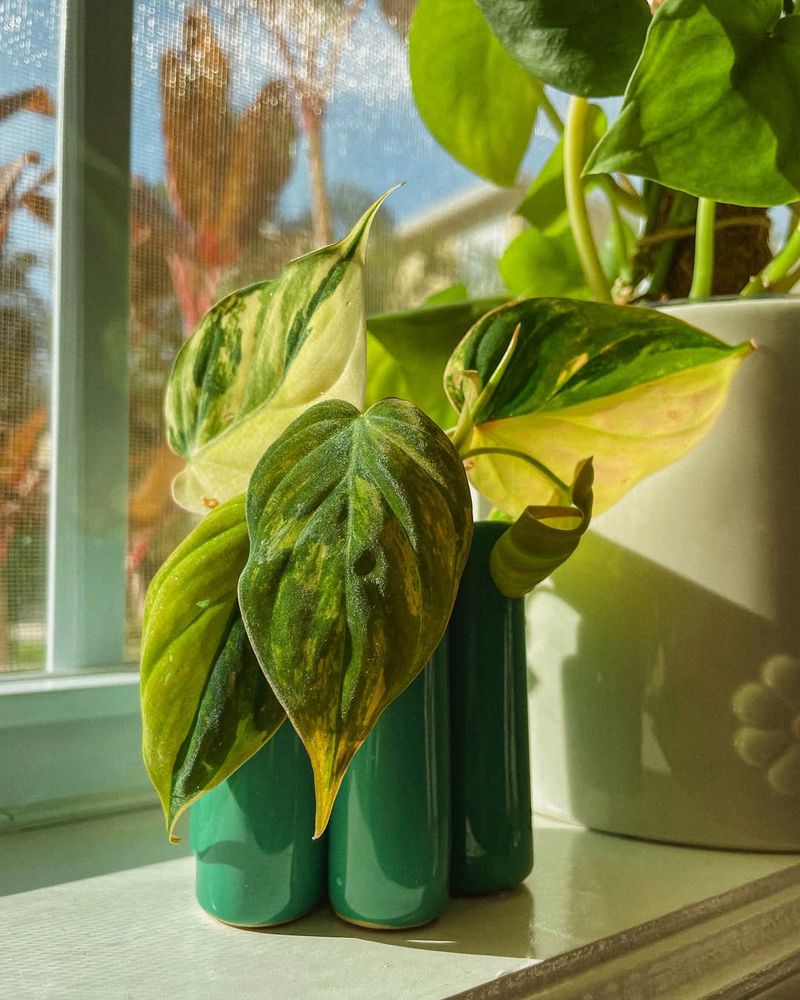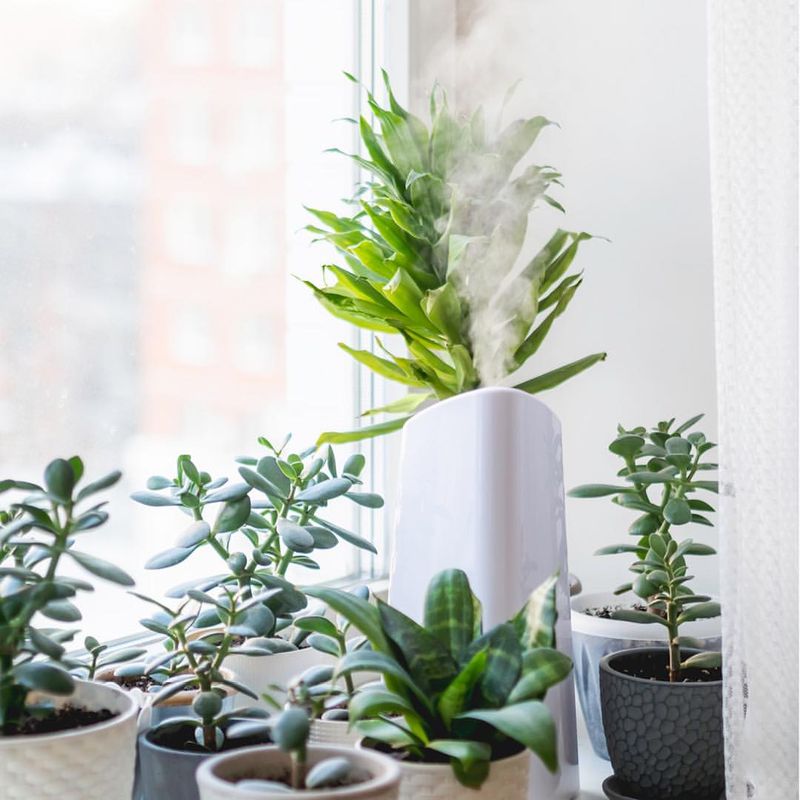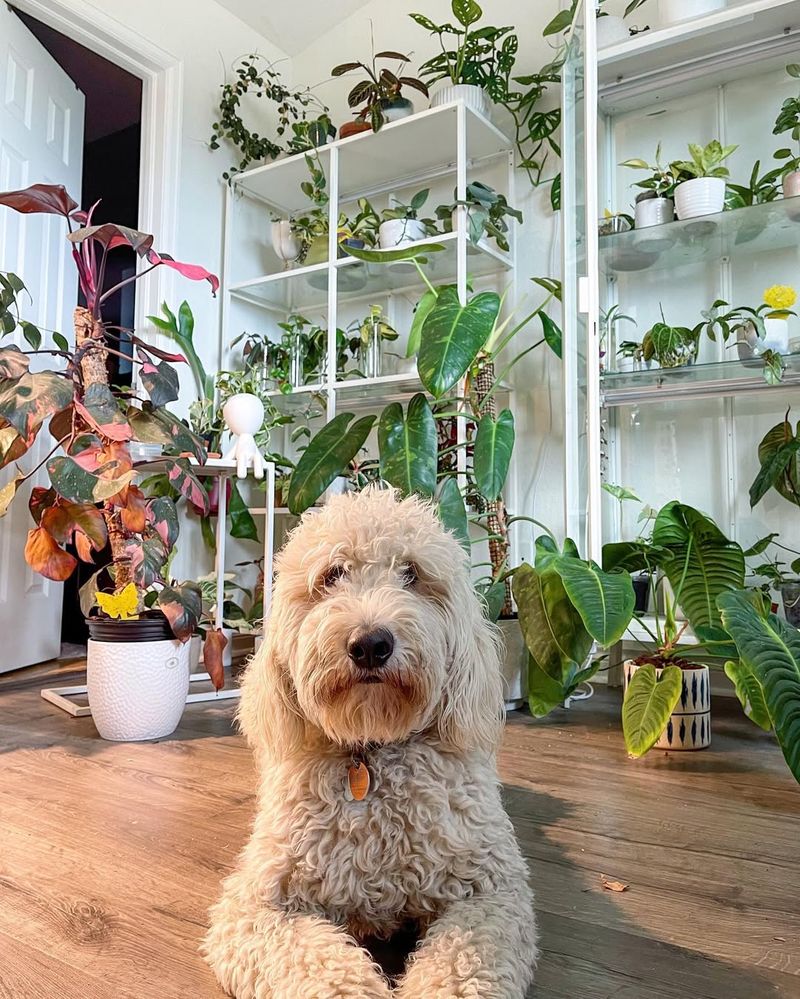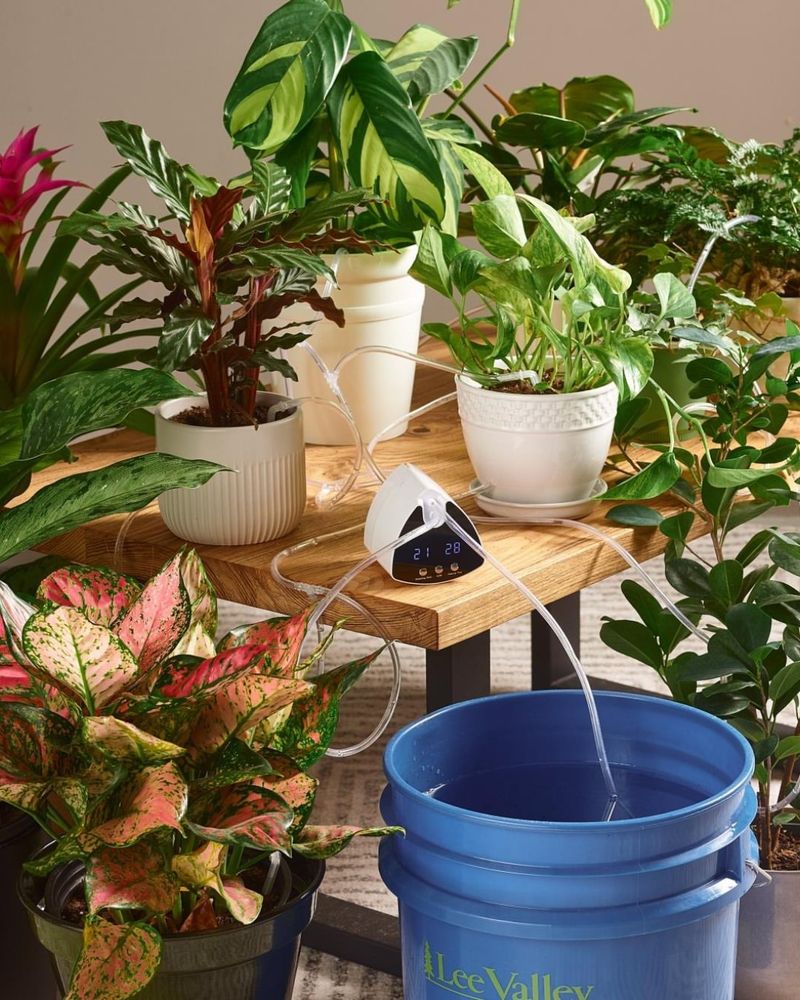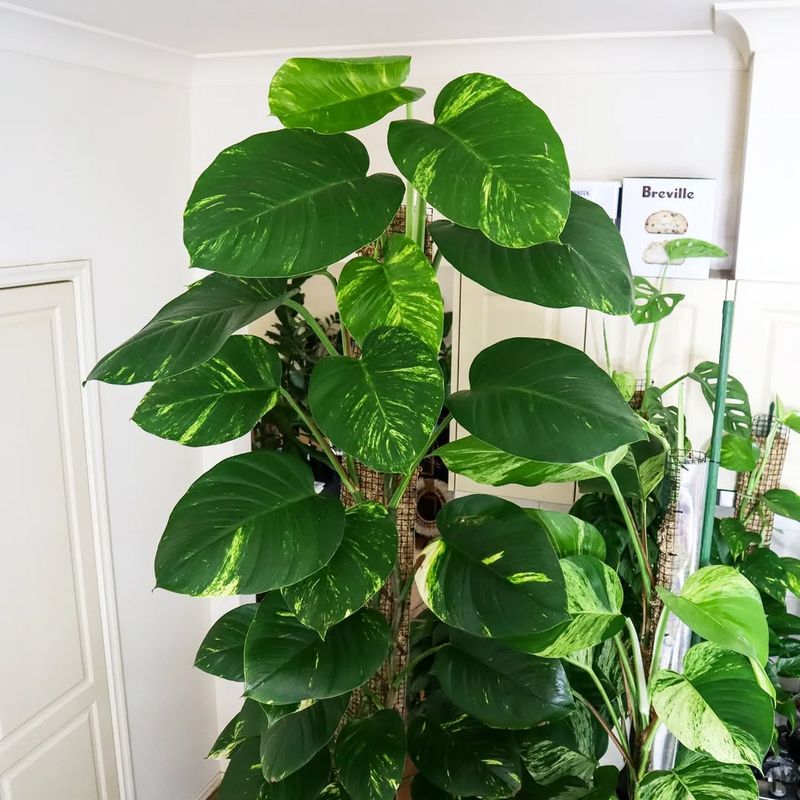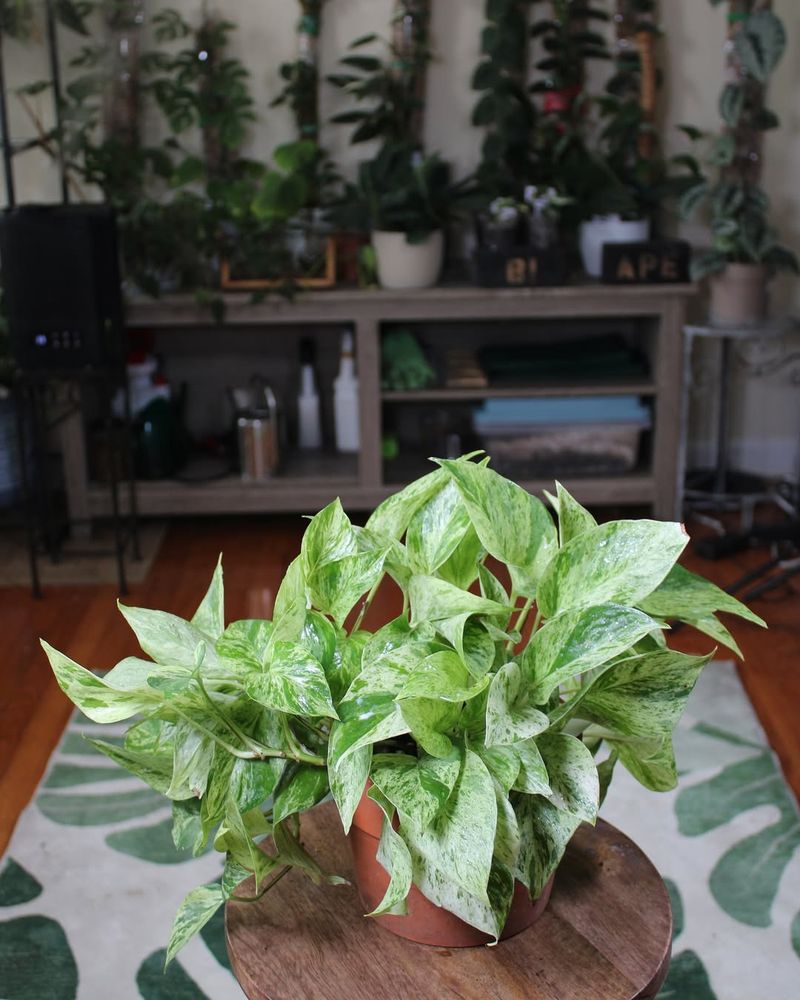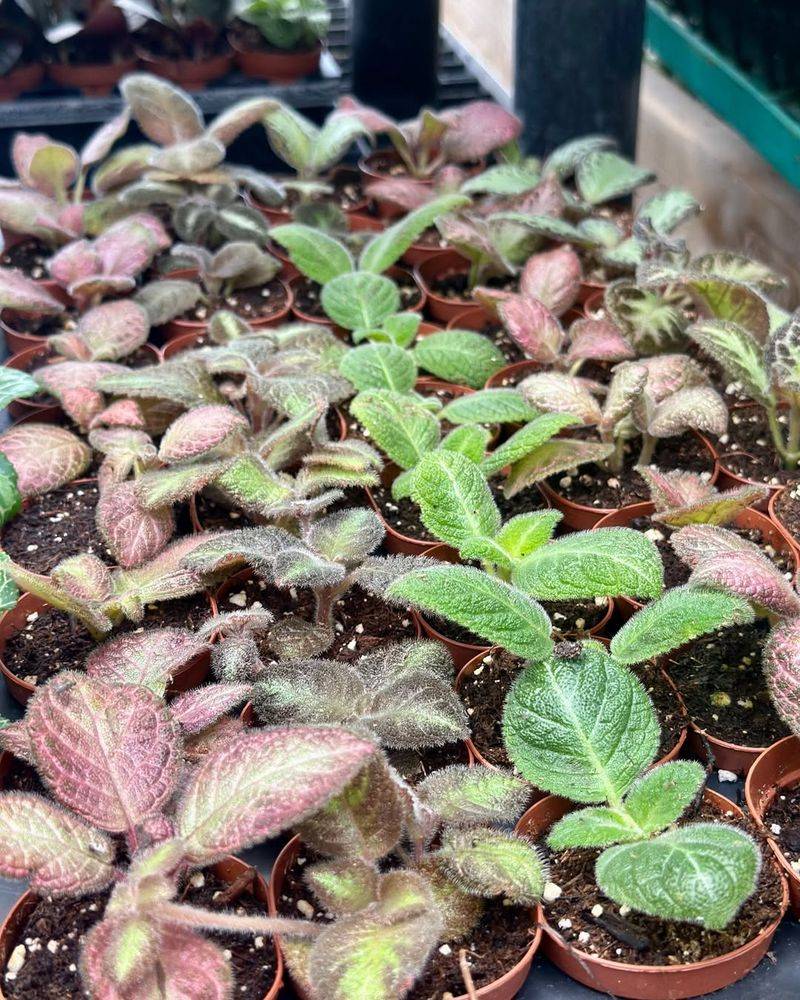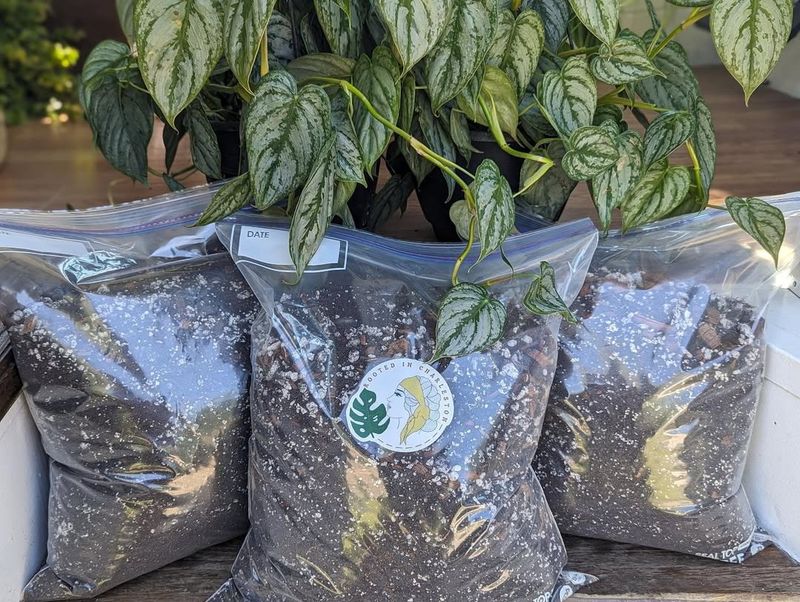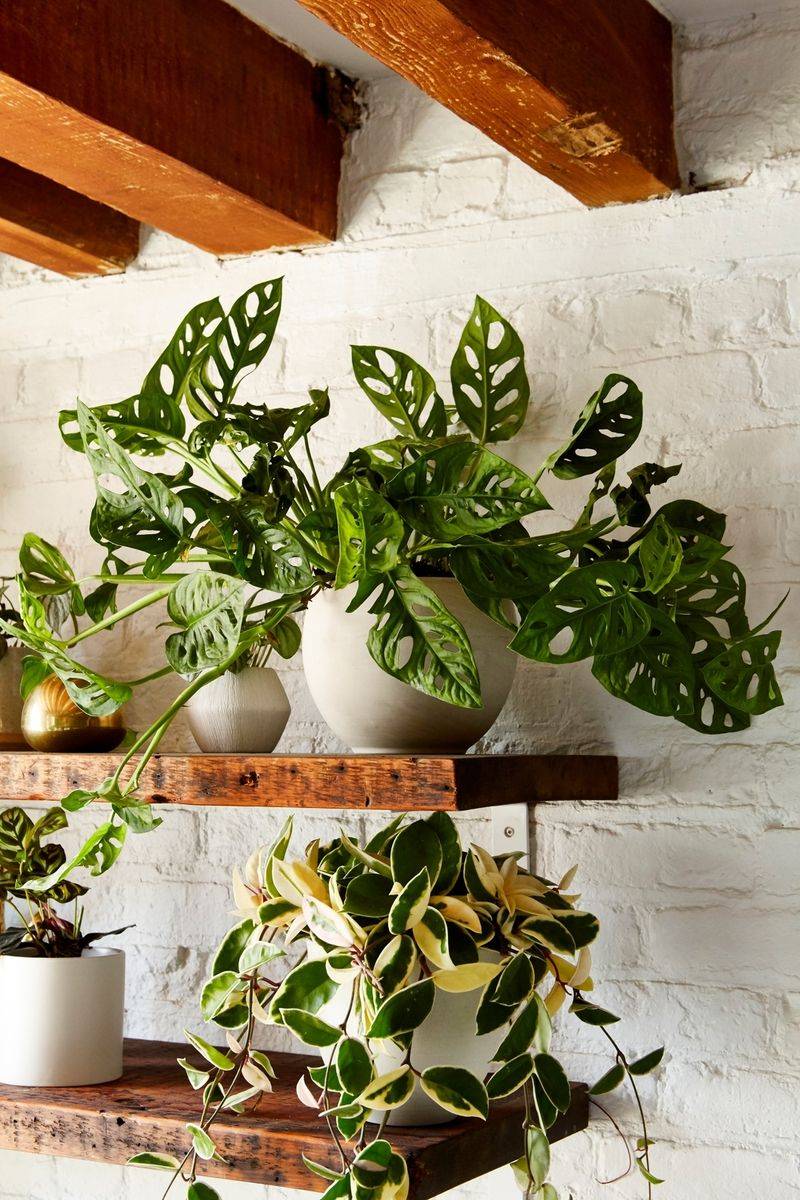Spring isn’t just a fresh start for nature—it’s also the perfect time to give your houseplants a little extra love. As the seasons shift in April, your indoor jungle needs some care adjustments to keep growing strong. Think of it as a seasonal refresh for your leafy friends!
From adjusting watering habits to giving them a well-deserved spring cleaning, these 28 game-changing tips will help your plants stay happy, vibrant, and ready to thrive. And don’t worry—I’m keeping it fun, practical, and totally beginner-friendly, because plant care should never feel like a chore. Let’s get into it!
1. Increase Watering Gradually
As temperatures rise, so does your plant’s thirst. Houseplants like the peace lily will appreciate a bit more water as they enter their growth phase. Pour gradually to avoid waterlogging the roots.
Check the soil moisture by sticking your finger about an inch deep. If it’s dry, then it’s time to water again. Be careful not to overdo it; soggy roots can lead to rot. It’s a delicate balance, but your plant will thank you with lush leaves.
2. Adjust Light Conditions
With longer days, light conditions change, affecting your plants’ needs. Move those that thrive in bright light, like succulents, closer to windows.
Keep an eye on leaf color; too much direct sunlight can scorch them. If you notice leaves turning yellow or brown, pull them back slightly. A little shuffle can make all the difference in maintaining healthy foliage.
3. Dust Off Leaves
Dust can block sunlight and clog pores, stunting growth. Even your favorite fiddle leaf fig deserves a good dusting now and then.
Use a soft, damp cloth to wipe down each leaf. You’ll marvel at the newfound shine and the plant’s ability to breathe easier. It’s like giving your plant a spa day; they love it!
4. Rotate Your Plants
Ever noticed your plants leaning? They stretch towards light, creating a lopsided appearance. Give them a little twirl every week or so.
Rotating ensures even growth and a symmetrical shape, especially for light-hungry varieties like the snake plant. It’s akin to a plant workout, minus the sweat!
5. Repot if Necessary
April is an ideal time for repotting, allowing roots to explore new territory. Check if your plant, perhaps a rubber tree, needs more space.
Gently slide the plant out of its pot. If roots circle the base, it’s time to upgrade. Use fresh soil mix, giving it a nutrient-rich environment to thrive. A room to grow is a room to flourish.
6. Fertilize Sparingly
Spring invites growth, and a bit of food helps. Choose a balanced fertilizer, but remember: a little goes a long way.
Apply sparingly to avoid overwhelming your plant. For instance, pothos enjoy a light feed to kickstart growth. Over-fertilizing can burn roots, so moderation is key. Your plant’s vigor will speak for itself.
7. Watch for Pests
With new growth comes new attention, sometimes from unwanted guests. Keep an eye out for pests like spider mites or aphids.
Check under leaves and in soil. Early detection is your best defense. If you spot any, use insecticidal soap or a gentle spray of water. Your plants will rest easy without pesky intruders.
8. Prune Dead Leaves
Trimming dead or yellowing leaves encourages new growth and keeps the plant tidy. If your monstera looks a bit scraggly, don’t hesitate to prune.
Cut close to the base, ensuring not to damage healthy tissue. It’s like a fresh haircut, breathing new life into your green friend. Revitalized and ready to grow!
9. Introduce Humidity
Dry air can be a plant’s nemesis. Increase humidity levels, especially for tropical varieties like ferns. Consider a humidifier or group plants together to create a micro-climate.
Watch them respond with lush, vibrant foliage. It’s a mini rainforest, right in your living room!
10. Avoid Overwatering
Even though plants need more water in spring, too much can be detrimental. Cacti, for instance, require restraint. Ensure pots have drainage holes and only water when necessary.
Overwatering can lead to root rot, which is a plant’s worst nightmare. Balance is crucial for thriving plants.
11. Clean the Pots
Dirt builds up, even on pots, clogging drainage and dulling appearance. Give them a good scrub. Use warm, soapy water to clean mineral deposits and grime.
Your plants will enjoy the refreshed environment. Clean pots are happy pots, ready to showcase your greenery.
12. Check for Root Bound
Stunted growth often signals roots outgrowing their pot. Gently slide out the plant to inspect. If roots form a dense mat, they’re root bound.
Transplant to a larger pot to allow expansion. It’s like upgrading from a studio to a suite – plenty of room to stretch out.
13. Use Rainwater if Possible
Tap water isn’t always ideal due to chlorine and chemicals. Rainwater, however, is pure bliss for a plant. Collect in a barrel or container.
It’s soft and free of additives, offering a more natural hydration. Your plants will flourish under this gentle caress.
14. Provide Consistent Temperature
Avoid fluctuating temperatures that can stress plants. Keep your indoor environment stable. Most houseplants favor 65-75°F.
Sudden cold drafts or heat waves can cause leaves to wilt or drop. A cozy, consistent temperature makes for happy plants.
15. Test Soil pH
Different plants have different pH preferences. Testing helps tailor the soil environment.
Use a pH meter to ensure levels meet your plant’s needs, such as keeping azaleas in slightly acidic soil. Adjust with amendments if necessary. Happy soil equals happy plants.
16. Provide Ample Ventilation
Stagnant air can hinder growth and foster diseases. Ensure your plants receive good airflow. Open windows when weather permits or use a fan.
Movement strengthens stems and wards off mold. It’s like a breath of fresh air, invigorating your green companions.
17. Inspect for Disease
Spotting disease early can save a plant. Watch for unusual spots, wilting, or mold. Remove affected areas immediately.
Fungicides can help if detected early. Your diligence prevents a minor issue from becoming a major headache. Healthy plants are your reward.
18. Use Mulch on Soil
Mulch retains moisture and suppresses weeds. A thin layer on top of the soil benefits most plants.
It mimics a forest floor environment, protecting roots and promoting healthy soil life. A bit of mulch goes a long way in keeping your potted friends content.
19. Create a Routine
Consistency is key in plant care. Establish a routine for watering, feeding, and pruning. Mark tasks on a calendar.
Your plants will thrive on predictability, getting exactly what they need when they need it. It’s a schedule your plants will love you for.
20. Choose the Right Pot
The pot plays a crucial role in plant health. Ensure it has adequate drainage and suits your plant’s size.
Terracotta pots are great for moisture control, while plastic retains humidity. Match the pot to your plant’s needs for optimal growth. The right pot is a plant’s best friend.
21. Avoid Direct Heat Sources
Heat sources can dry out leaves and soil. Position plants away from radiators and heaters. Direct heat can scorch leaves and cause rapid water loss.
A little distance keeps your plants comfortable and thriving. It’s about creating a cozy, not scorching, environment.
22. Mindful of Pet Interference
Pets and plants don’t always mix. Ensure your plants are safe from curious paws and nibbling. Place them out of reach or use deterrents.
A mischievous cat can undo your hard work in seconds. Protect your greenery while keeping peace with your furry friends.
23. Plan for Vacation
Ensure your plants are cared for when you’re away. Self-watering pots or a plant sitter can help. Plan ahead to maintain watering schedules.
A bit of preparation ensures your plants stay lush, even in your absence. Vacation without plant guilt!
24. Know Your Plant’s Dormancy
Understanding dormancy aids in care. Some plants need rest periods; recognize the signs. Reduce watering and feeding during this time.
Respecting dormancy lets your plant recharge for vibrant growth later. It’s like a well-deserved nap for your green friend.
25. Monitor Growth Patterns
Each plant has unique growth cycles. Observe and note changes, adjusting care as needed. Growth spurts may need more nutrients, while slow times might not.
Tailoring care ensures each plant reaches its potential. It’s a personalized growth journey.
26. Incorporate Companion Plants
Some plants thrive when paired. Choose companions that complement each other in light, water, and space needs.
This promotes a harmonious environment. Companion planting can deter pests and enhance growth. Your plants will enjoy the company and you’ll enjoy the view.
27. Regularly Refresh Soil
Over time, soil loses nutrients. Refreshing it keeps your plants healthy. Replace the top layer or repot with new soil.
This provides essential nutrients for robust growth. Fresh soil is like a multivitamin for your plant’s roots.
28. Be Patient and Observant
Plants don’t rush. Observe patiently, and they’ll show you what they need. Adjust care based on behavior.
Patience reveals patterns, helping you provide better care. It’s a journey of growth, both for you and your plants. Enjoy the process.

